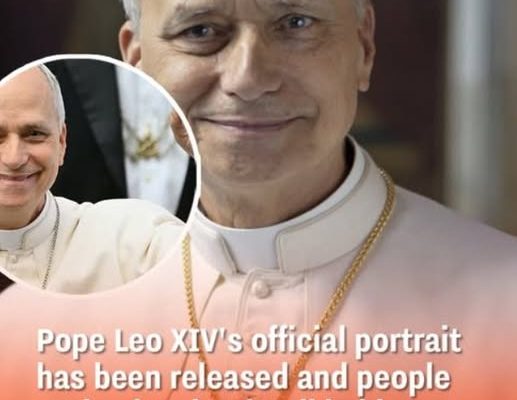It has now been ten days since the world received news of the election of Pope Leo XIV, the new Bishop of Rome and leader of the global Catholic Church, following the death of Pope Francis on Easter Monday, April 21. The announcement of his election by the College of Cardinals brought an end to a short but emotionally charged sede vacante—the period when the papal seat is vacant—and ushered in a new era of leadership for the Church.
At 69 years old, the Chicago-born pontiff has already begun making his presence felt. Since his election, he has celebrated his first official mass, notably delivering part of it in English, a choice that surprised many and signaled a possible commitment to a more globally inclusive and accessible papacy. Fluent in multiple languages, Pope Leo XIV has been described by insiders as a “bridge-builder” and a man deeply attuned to both the traditions and tensions of modern Catholicism.
Ahead of his first public mass at the Vatican, scheduled for Sunday, May 18, the Vatican unveiled Pope Leo’s official papal portrait, which quickly became the subject of widespread online discussion and scrutiny—not so much for what it included, but for what it symbolized.
A Portrait Filled with Tradition—and a Touch of Controversy
The portrait, distributed to dioceses and media outlets around the world, presents the new Pope in his traditional white papal vestments, adorned with a large gold pectoral cross. He is facing the camera directly, offering a gentle, knowing smile. To many, the portrait exudes humility, strength, and serenity—traits long associated with effective pontiffs. In the lower right-hand corner, viewers can see the papal coat of arms, a unique heraldic design created for each pope upon their election.
Beneath the image appears the Latin phrase: “In illo uno unum”, which translates as “In the One, we are one”—a theologically rich statement suggesting unity through God, a concept deeply rooted in Catholic doctrine. The line, experts believe, reflects Pope Leo’s emphasis on spiritual and ecclesial unity during a time when the global Catholic Church is facing challenges related to doctrinal divisions, political polarization, and declining participation in many Western countries.
Also visible in the lower portion of the portrait is Pope Leo’s handwritten signature: “Leo P.P.XIV.” While some readers focused on the image’s symbolism and composition, many others became intrigued by that small but significant abbreviation in the middle: “P.P.”
The Meaning of ‘P.P.’ – A Clue into Papal Identity
The mystery surrounding “P.P.”—a common yet often misunderstood part of papal signatures—sparked conversation across platforms like Reddit, Twitter, and Facebook.
One Reddit user asked, “What does the ‘P.P.’ in the middle mean?”—a question echoed by many unfamiliar with the centuries-old traditions of papal naming conventions. Some respondents offered theories, with one user correctly identifying the abbreviation as “Pastor Pastorum”, which translates from Latin to “Shepherd of Shepherds”.
This title, while not as widely recognized as “Pontifex Maximus” (P.M.), is deeply symbolic. It emphasizes the Pope’s role not just as a leader of the laity, but as the chief spiritual guide for bishops and priests—the shepherd to those entrusted with guiding others. The term speaks to the theological foundation of the papacy as a ministry of care, guidance, and unity, rooted in the example of Christ as the Good Shepherd.
Others speculated that it might mean “Papa et Pontifex” (“Pope and Pontiff”), but scholars and ecclesiastical experts clarified that “Pastor Pastorum” has been the traditional understanding among recent pontificates. The abbreviation “P.P.” has appeared in papal documents and inscriptions for generations, although it is rarely explained publicly, leading to the curiosity seen online.
A Bold First Message on Marriage and Life
While the portrait sparked aesthetic and linguistic curiosity, it was Pope Leo’s first major public address on social issues—delivered earlier this week—that drew global headlines and ignited spirited debate.
In remarks reported by AP News, Pope Leo XIV reaffirmed the Church’s traditional stance on marriage, stating that “a family is established on the stable union between a man and a woman.” His comments, though not surprising from a doctrinal standpoint, were seen by many as a strong statement amidst ongoing debates over LGBTQ+ rights, civil unions, and family diversity.
“Governments,” he said, “must establish peaceful societies, above all by investing in the family, which is founded on the stable union between a man and a woman.”
While maintaining the Church’s pro-life position, he went on to underscore the importance of upholding the dignity of all human life, from conception to natural death.
“No one is exempt from the duty to protect the dignity of every human person,” he stated. “Especially the most frail and vulnerable—this includes the unborn, the elderly, the sick, the unemployed, and both citizens and immigrants.”
This statement reflects a continuation of themes emphasized by Pope Francis, particularly regarding care for the marginalized and poor. However, Leo XIV’s tone was slightly more firm, placing traditional family structures at the center of societal health and moral responsibility.
A New Papacy in a Time of Tension
Pope Leo’s ascent to the papacy comes at a critical juncture for the Catholic Church. In recent years, the Church has faced growing internal tensions between progressive and conservative camps, especially over issues such as the blessing of same-sex couples, the role of women in the Church, priestly celibacy, and how to respond to abuse scandals.
His first public messages suggest a desire to uphold orthodoxy while continuing to engage the broader world through clear, moral language. His use of English during his inaugural mass and his swift appearance on social media platforms also indicate a willingness to connect with younger, global audiences and step into a more modern form of papal communication.
However, his remarks on marriage are likely to stir controversy, especially in regions where the Church is already navigating tensions over inclusion and cultural change. Critics fear that reinforcing heteronormative family ideals could further alienate LGBTQ+ Catholics and younger generations seeking a more inclusive Church.
Supporters, meanwhile, see Pope Leo as a steadying figure—someone who can defend tradition while renewing confidence in Church leadership.
A Papacy Taking Shape
As the world awaits Pope Leo XIV’s first major Vatican mass on May 18, anticipation continues to build. Observers will be watching not just for what he wears or says, but for the tone and direction he sets for the next chapter of the Catholic Church.
His papal motto, “In illo uno unum” — “In the One, we are one” — may offer a glimpse into his mission: unity through God, despite a world increasingly fractured by ideology and identity.
Time will tell whether Pope Leo will emerge as a bridge between tradition and progress, or as a guardian of doctrinal continuity in an age of rapid cultural transformation.
But one thing is already clear: his voice is being heard—and closely watched—around the globe.

